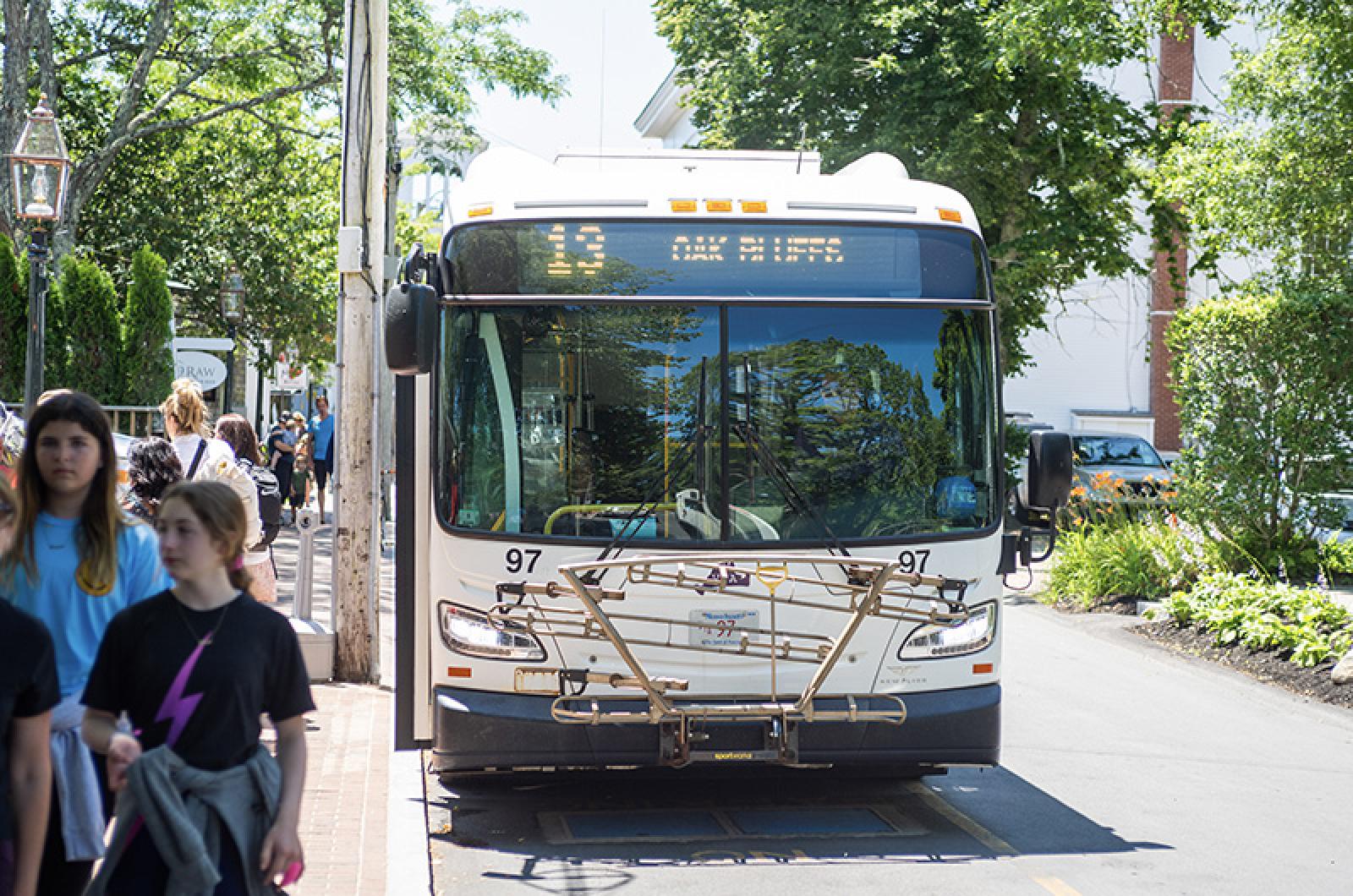Most seasons the Vineyard Transit Authority has seven buses driving route 13, which runs from the Steamship Authority in Vineyard Haven and along State Beach to Church street in Edgartown. On a good year, VTA administrator Angie Gompert said there’s enough staff to run eight buses on the route.
This year, five drivers cover service for the busiest route on Martha’s Vineyard.
“There’s definitely days where there’s a line in Oak Bluffs trying to get into Edgartown,” Ms. Gompert said.
A bus driver shortage has led the transit authority to reduce schedules twice this summer, even after delaying the start of increased service at the beginning of the busy season. Ms. Gompert said there are about 50 operators driving buses on the Vineyard’s routes.
When travel demand exceeds available drivers, she said VTA managers sometimes get behind the wheel and office workers take over dispatch.
“If we had had maybe 10 more people, we’d have been perfect,” Ms. Gompert said.
In the lead-up to summer, Ms. Gompert said the transit authority was confident it would be able to keep the expanded schedules it planned. But just before the start of increased service, she said a handful of would-be drivers dropped out.
“We had like three or four people change their plans at the last minute,” she said.
The first permanent service reduction to the bus line came early this month, affecting nine of the VTA’s 13 routes. The driver shortage led to further reductions announced this week, broadly diminishing evening service.
On Routes 3 and 6, which connect West Tisbury to Vineyard Haven and Edgartown respectively, the final trip of the day is now an hour earlier in both directions. Service on route 13 now runs less frequently after 5:45 p.m. Other routes servicing Chilmark and Aquinnah, South Beach, the Martha’s Vineyard airport and Martha’s Vineyard Hospital have also been reduced.
“It’s kind of like death by 1,000 cuts,” Ms. Gompert said.
The VTA has taken measures to adapt to the driver shortage, she added, such as introducing digital passes. She said the VTA’s two large electric buses also help cart more people around the Island because the lack of an engine creates more space for passengers.
“We’ve really looked at all sides of the operation to see where we can be more efficient,” Ms. Gompert said. “We’ve gotten really as efficient as we can. We’re as lean as we can be.”
Ms. Gompert said the bus service is no stranger to driver shortages — years where the VTA is fully staffed have been exceedingly rare in her tenure, she said. But service this year failed to return to pre-pandemic levels.
“There’s kind of this snowball effect that has hit,” Ms. Gompert said.
She said during the pandemic, commercial driver’s licenses were harder to obtain, alongside the certifications needed to teach potential drivers.
“At every level, things are complicated,” she said.
What’s more, Ms. Gompert said the stresses of driving on a busy Island filled with mopeds, cyclists and pedestrians can deter people from applying for the job, despite offers of housing and a recent hike in wages.
“Twenty-five bucks an hour isn’t bad, but dishwashing is $25 an hour and it’s cash,” Ms. Gompert said.
Still, she said many of the bus drivers currently employed are people she knows are equipped to handle the job and who want to be doing the work.
“It’s a lot of responsibility — you’re driving down a road that’s very crowded...and people, when they go on vacation, sometimes they relax a bit,” Ms. Gompert said.
She said ridership on the Vineyard’s buses still hasn’t fully recovered from pre-pandemic levels; she’s not sure if it ever will. But the busiest weeks of the summer, from the end of July to mid-August, are on the horizon and staffing remains a significant struggle for drivers and VTA officials alike.
“It’s going to be a tough four weeks ahead,” Ms. Gompert said.







Comments
Comment policy »